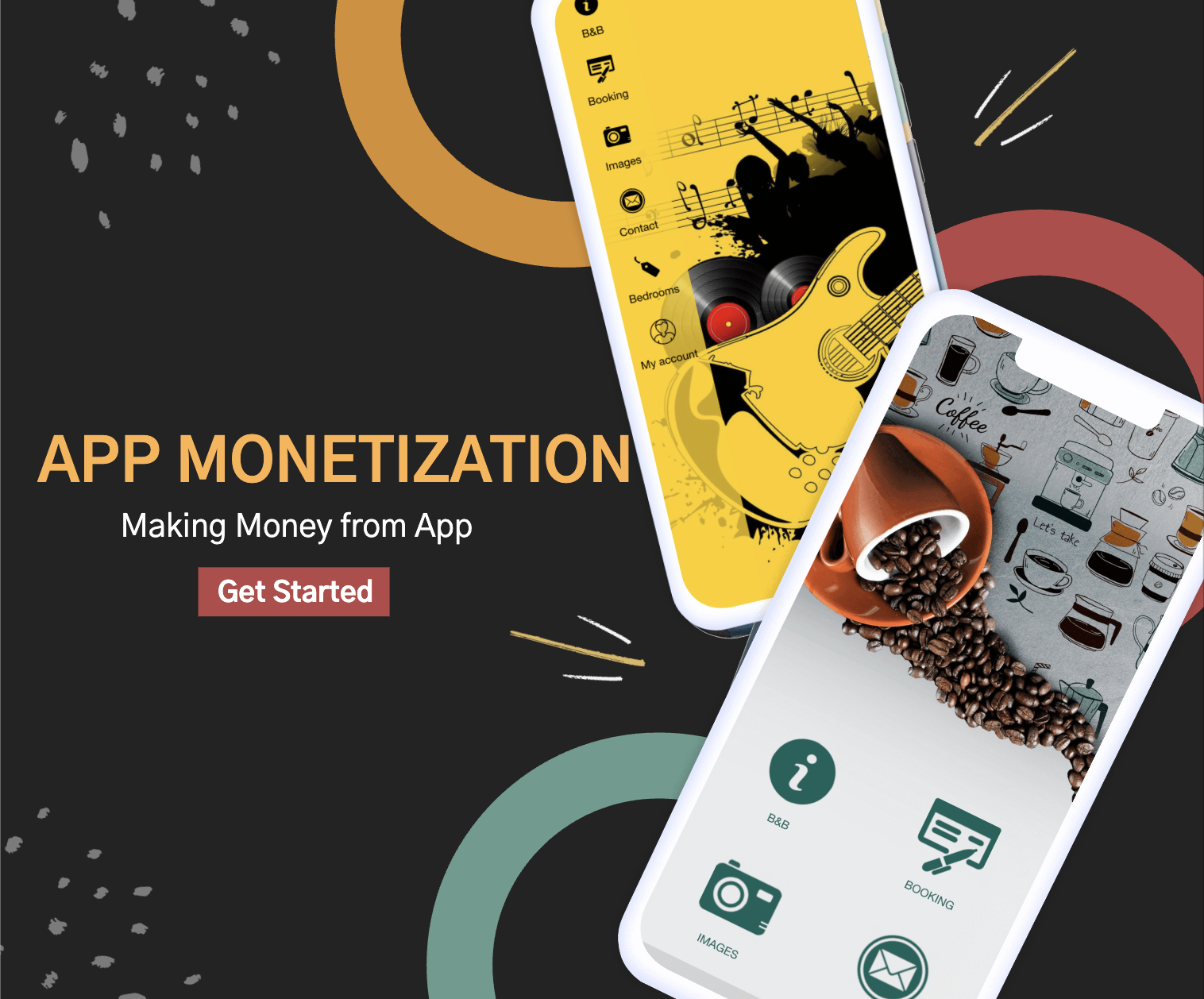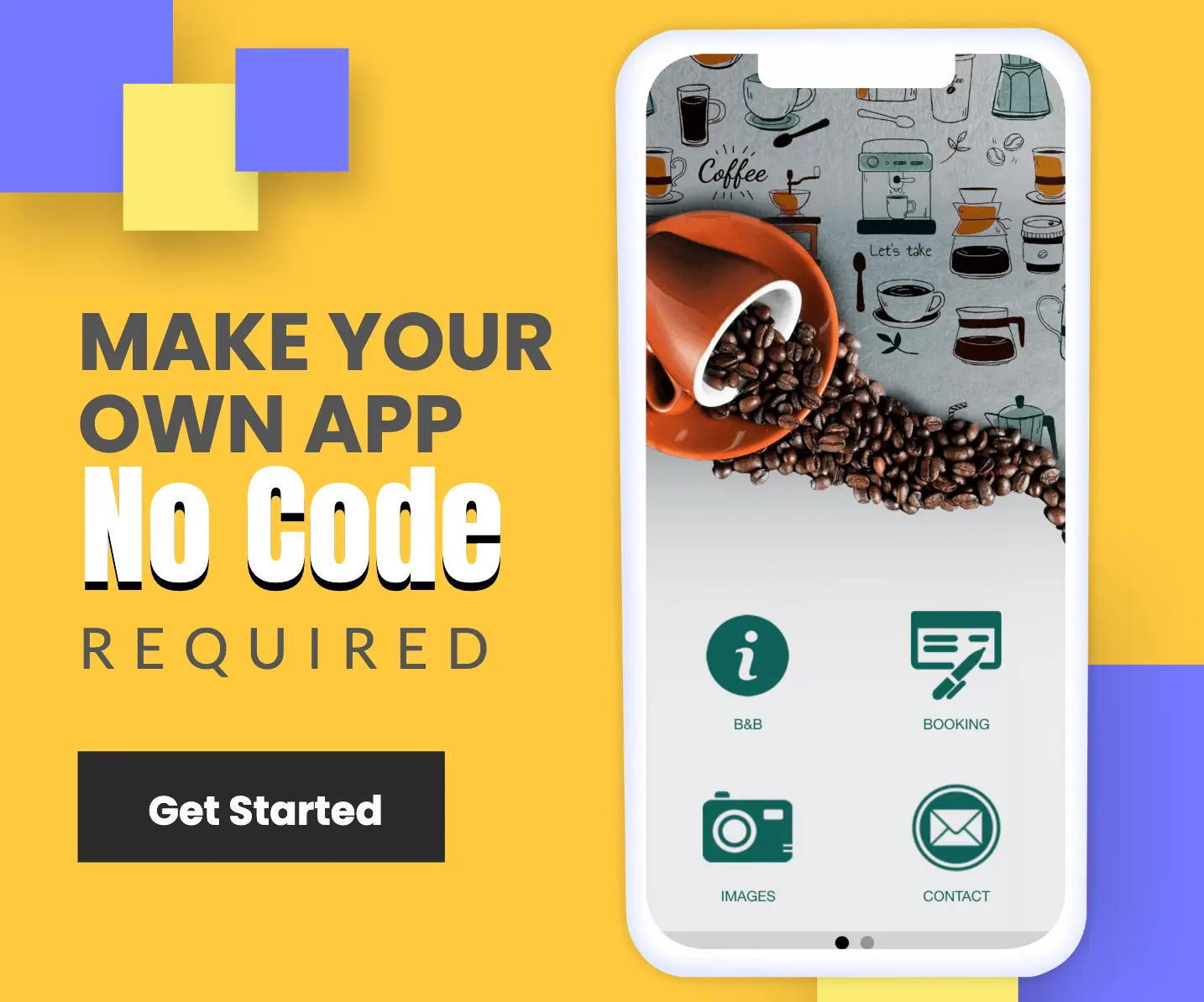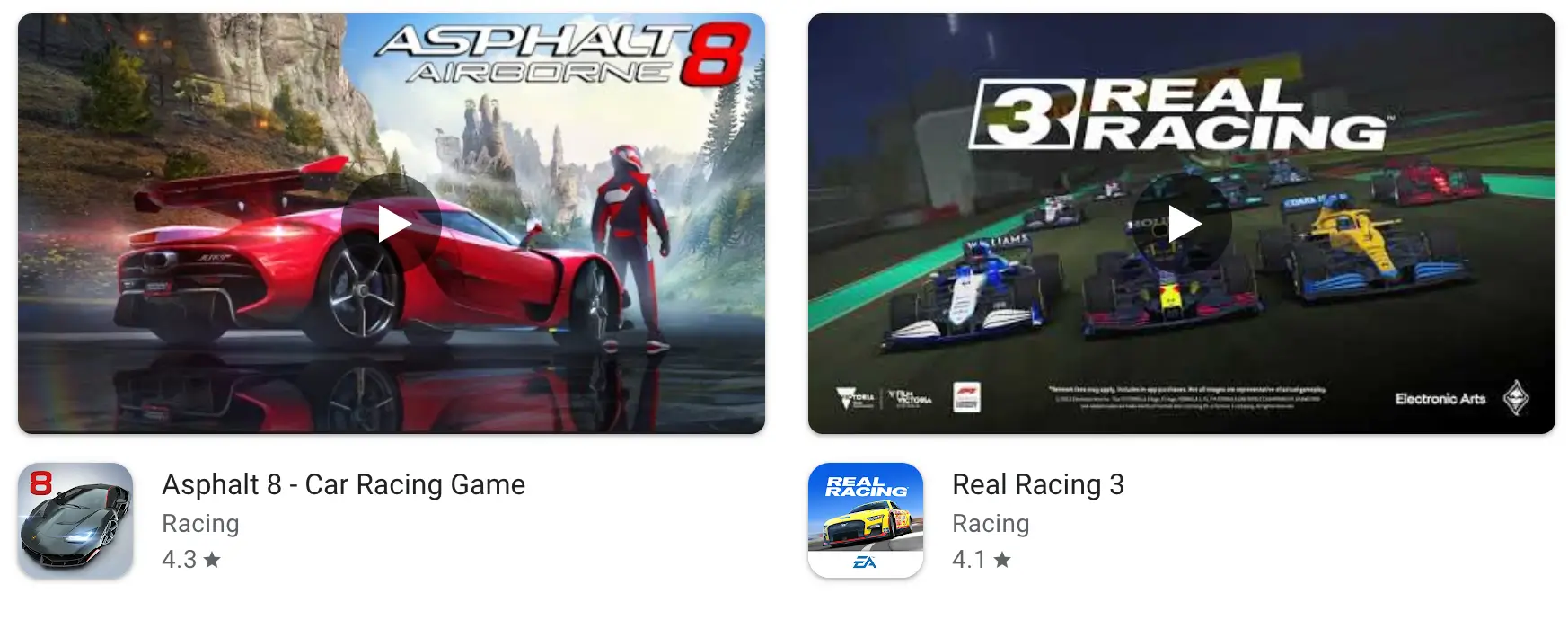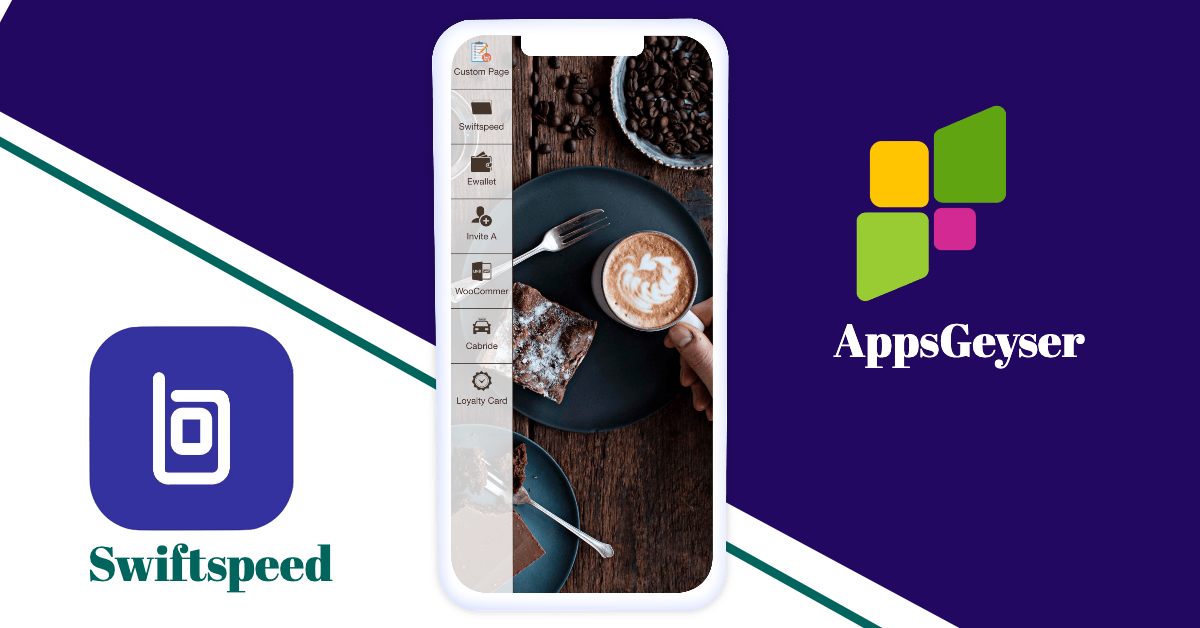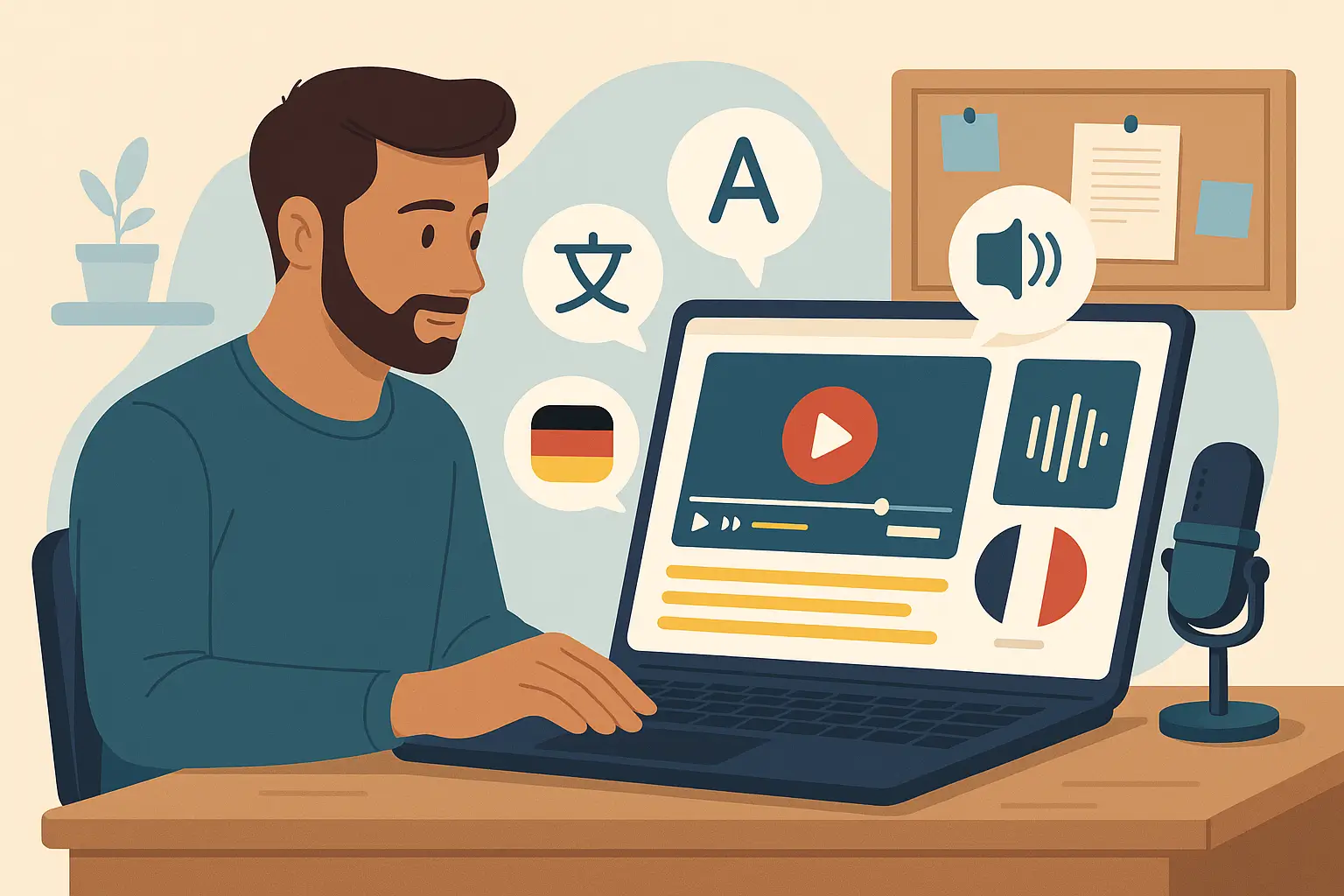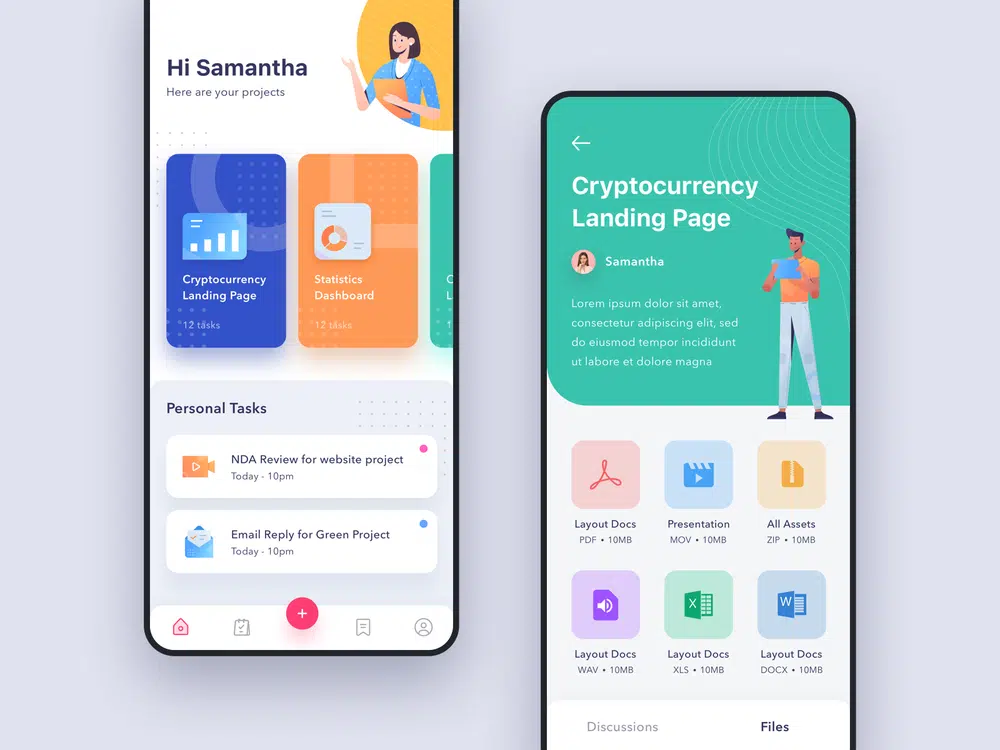As mobile devices become more ubiquitous, apps have emerged as a popular and profitable business model. Apps (short for applications) are software programs designed to run on smartphones, tablets, and other mobile devices. They are available in app stores like the Apple App Store and Google Play Store, where users can browse, purchase, and download apps to their devices.
Apps come in all shapes and sizes, offering different types of functionality. Some common categories include games, social media, messaging, health & fitness, navigation, entertainment, business and more. Apps provide a convenient way for users to perform tasks, get information, and access services right from their mobile devices.
For developers and entrepreneurs, apps present an opportunity to build a business by monetizing the apps they create and distribute. There are several proven models for making money from apps, which we’ll explore in this guide:
- Paid apps
- In-app purchases
- In-app advertising
- Sponsorships
- Affiliate marketing
- Creating a website
- Selling user data
- Crowdfunding
for choosing the right one for your app. We’ll also look at some examples of apps that are using freemium successfully and how they’re doing it.
The key is finding the right approach (or combination of approaches) that aligns with the type of app you are developing and your target audience. With the right monetization strategy, apps can generate impressive revenue streams. This guide will break down the pros and cons of each model to help you determine the best options for maximizing earnings from your mobile apps.
We’ll also walk you through how to create an app and monetize it using different types of freemium models and offer some tips
What is Freemium App Monetization?
Freemium app monetization refers to a business model where mobile applications are offered to users for free, with the option to access additional premium features or content through in-app purchases. This approach allows app developers to reach a wider audience by eliminating barriers to entry and enticing users to upgrade to a paid version for enhanced functionality or exclusive content.
Benefits of Freemium:
1. User Engagement: By offering a freemium model, app creators can attract a larger user base, as many people are hesitant to pay upfront for an app they haven’t tried. This increased user engagement can lead to higher retention rates and word-of-mouth promotion.
2. Revenue Generation: While the initial app download may be free, the inclusion of premium features or content provides an opportunity for developers to earn revenue. Users who find value in the app are more likely to unlock additional functionality through in-app purchases or subscriptions.
App Monetization Strategies:
1. In-App Ads: Integrating advertisements within the app allows developers to generate revenue from advertisers. These ads can take the form of banners, interstitials, or video ads. Strategic ad placement is essential to maintain a positive user experience without interrupting app usability.
2. In-App Purchases: Offering virtual goods, additional levels, or premium content through in-app purchases allows users to enhance their app experience. This approach leverages user desire for exclusivity or enhanced functionality, providing a revenue stream for developers.
How to Implement Freemium App Monetization:
1. Offering Free and Paid Features: Carefully design your app to include both basic free features and enticing premium features. The free offering should provide enough value to attract users while leaving room for additional perks in the premium version.
2. Analyzing Your User Base: Understand your target audience and their needs. Collect data on user behavior, preferences, and spending habits to inform your monetization strategy. This data-driven approach allows you to tailor your premium offerings to maximize user engagement and revenue.
Tips for Optimizing Your Freemium App Monetization:
1. Creating a Seamless User Experience: Ensure a smooth transition between free and premium features. Offer intuitive app navigation, minimize friction in the upgrade process, and provide clear explanations of the added benefits of the premium version.
2. Testing and Improving Your Monetization Model: Regularly analyze user feedback, metrics, and performance indicators to evaluate the effectiveness of your monetization strategy. Refine your approach based on user preferences
Freemium is a popular app monetization model that combines both free and premium features to engage users and generate revenue. In this model, the app is offered for free, allowing users to access basic functionalities without any cost. However, additional premium features or content are made available for purchase within the app.
What is freemium, and how does it make money from apps?
You may often ask yourself, how do free apps make money? The freemium model is one of the prominent ways an app builder can make money from apps; Freemium refers to the practice of offering a free version of an app alongside a premium, paid version. It is a strategic approach for app developers and publishers to attract a larger user base by eliminating initial payment barriers. By providing a free version, users can explore the app’s basic functionalities before deciding whether to upgrade to the premium version for enhanced features and benefits.
Benefits of Freemium
Freemium app monetization offers several advantages for both app developers and users. For developers, it allows widespread adoption of their app, leading to an increased user base and potential monetization opportunities through premium upgrades. It also provides an opportunity for developers to gather valuable user feedback, enabling continuous improvement and optimization of the app.
For users, the freemium model enables access to the core features of an app without any upfront cost. This attracts more users and encourages them to explore the app’s offerings before deciding to invest in premium features. This gives users the flexibility to evaluate the app’s value and functionality before making a purchase decision.
“In the freemium business model, users pay nothing to download your app and are offered optional in-app purchases for premium features, additional content, or digital goods.” – App Monetization – Apple App Store
How to Implement Freemium App Monetization
To implement freemium app monetization successfully, it is essential to consider the following strategies:
1. Offering Free and Paid Features: Clearly define the differences between the free and premium versions of your app. Ensure that the free version provides enough value to engage users while enticing them to upgrade for additional benefits.
2. Analyzing Your User Base: Conduct thorough market research and user analytics to understand your target audience’s preferences and pain points. This data will help you identify the features that users are most likely to pay for, allowing you to create compelling premium offerings.
Benefits of Freemium
Freemium app monetization offers numerous benefits to both app creators and users. Here are some key advantages of implementing a freemium model:
1. Increased User Base: By offering a free version of your app with limited features, you can attract a larger audience. Users who are initially hesitant to pay for an app can try it out at no cost, increasing the likelihood of them becoming regular users or eventually upgrading to the premium version.
2. User Engagement: The freemium model encourages users to engage with your app by providing a taste of its features. This engagement can lead to higher user satisfaction and increased user retention, as users are more likely to invest in the app if they find value in the free version.
3. Marketing and Brand Awareness: Offering a free version allows you to leverage various marketing channels to promote your app. Users who enjoy the free version may recommend it to others, leading to organic growth and increased brand awareness.
4. Competitive Advantage: In a market saturated with paid apps, freemium models can give you a competitive edge. Users often prefer apps that provide value upfront without the commitment of purchasing.
5. Upselling Opportunities: Freemium models open up opportunities for upselling, where you can entice users to upgrade to the premium version by showcasing the additional features, functionality, or content they would gain access to.
App Monetization Strategies
When it comes to monetizing your app with a freemium model, there are several strategies you can employ to generate revenue while providing value to your users. Here are two effective strategies to consider:
1. In-App Ads:
Including advertisements within your app is a common way to monetize free apps. By partnering with ad networks or implementing native ads, you can display relevant ads to your users and earn revenue through impressions or clicks. It’s important to strike a balance between user experience and ad placement to avoid overwhelming your users with intrusive advertisements.
– Native ads: These ads blend seamlessly with your app’s design, providing a more organic user experience. By integrating native ads in a non-disruptive manner, you can maintain positive user engagement while generating ad revenue.
– Banner ads: Placing banner ads in strategic positions throughout your app’s interface can be an effective way to monetize. However, be cautious not to interrupt the user experience or hinder app functionality, as this can lead to user frustration.
2. In-App Purchases:
Offering premium features or digital goods within your app can be a lucrative monetization strategy. By enticing users with additional functionality or exclusive content, you can provide value beyond the basic free features. Implementing in-app purchases allows users to unlock these premium offerings through one-time payments or subscriptions.
– Unlockable content: Consider providing access to premium levels, advanced features, or exclusive content that enhances the user experience. This allows users to enjoy the app at a higher level while also supporting your monetization efforts.
– Virtual goods or currency: Create a virtual economy within your app by offering digital goods or in-app currency that users can purchase. This allows users to personalize their experience or gain advantages within the app, while generating revenue for your business.
Make an app with Swiftspeed Appcreator
Create premium apps without writing a single line of code, thanks to our user-friendly app builder. Build an app for your website or business with ease.
In-App Ads
In-app advertising is one of the most common strategies for monetizing freemium apps. By displaying ads within the app, developers can generate revenue from advertisers. Here are some key points to consider when implementing in-app ads:
1. Types of Ads:
– Banner Ads: These are small, rectangular ads that appear at the top or bottom of the app screen.
– Interstitial Ads: These are full-screen ads that appear at natural transition points within the app, such as between levels in a game or when switching screens.
– Native Ads: These are ads that seamlessly blend into the app’s design, providing a more user-friendly experience.
2. Ad Networks:
Consider partnering with reputable ad networks that provide a wide range of ad formats and maximize fill rates. Popular ad networks include Google AdMob, Facebook Audience Network, and Unity Ads.
3. Ad Placement:
Strategically place ads to balance user experience and revenue generation. Avoid intrusive ads that disrupt the app’s flow or lead to accidental clicks. Ad placement should be unobtrusive and harmonize with the overall app design.
4. Ad Targeting and Personalization:
Leverage user data to serve targeted ads that are relevant to individual users. By understanding users’ preferences and behaviors, you can provide more personalized experiences, leading to increased engagement and ad revenue.
5. Performance Tracking:
Regularly monitor ad performance using analytics tools provided by the ad network or third-party platforms. This will help you optimize your ad strategy, including adjusting ad formats, placements, and targeting to maximize revenue.
6. Ad Mediation:
Consider implementing ad mediation to optimize revenue from multiple ad networks. Ad mediation platforms help you manage and prioritize different ad sources, ensuring you get the best possible fill rates and eCPMs (effective cost per thousand impressions).
💡 key Takeaway: Implementing in-app ads is a popular strategy for monetizing freemium apps. Carefully consider the types of ads, ad networks, ad placement, targeting, performance tracking, and ad mediation to optimize your revenue while maintaining a positive user experience.
In-App Purchases
In-app purchases have become a popular and effective method for monetizing freemium apps. By offering additional features, virtual goods, or content through in-app purchases, app developers can generate revenue while still providing a free version of their app to attract and engage users. Here are some key points to consider when implementing in-app purchases:
1. Types of in-app purchases:
– Consumable: These are items that can be purchased and used repeatedly, such as virtual currency or extra lives in a gaming app.
– Non-consumable: These are items that are purchased once and permanently unlocked, such as additional levels or ad-free experience.
– Subscriptions: These are recurring purchases that provide access to premium content or features on a monthly or yearly basis.
2. Strategic pricing:
– Determine the value of your in-app purchases by analyzing the market and evaluating the worth of the offered features or content.
– Consider offering different price points to cater to a wider range of users and maximize revenue potential.
– Experiment with limited-time sales or discounts to encourage more purchases and create a sense of urgency.
3. Transparent and intuitive purchase process:
– Clearly communicate the benefits and value of the in-app purchase to users.
– Keep the purchase process simple and streamlined, minimizing the number of steps required for users to complete a purchase.
– Maintain transparency by displaying the cost and details of the purchase upfront, without any hidden fees or surprises.
4. Offer incentives and rewards:
– Motivate users to make in-app purchases by offering exclusive bonuses, rewards, or discounts for premium features.
– Implement a loyalty program that rewards users for their continued engagement and purchases within the app.
– Regularly update and add new content or features to keep users interested and encourage them to make additional purchases.
💡 key Takeaway: In-app purchases are a valuable strategy for monetizing freemium apps by offering users the opportunity to unlock premium features or content. By strategically pricing and creating a seamless purchase process, app developers can generate revenue while providing an engaging and enjoyable user experience.
Implementing Freemium App Monetization
When it comes to implementing freemium app monetization, there are several key strategies to consider. By offering both free and paid features, you can engage a wider user base while generating revenue from those who opt for premium offerings. Here are some tips on how to effectively implement freemium app monetization:
1. Offering Free and Paid Features:
One of the fundamental aspects of freemium app monetization is to provide a clear distinction between the free and premium features. Make sure to offer valuable functionalities in the free version, enticing users to engage with your app and get a taste of what they could unlock with the paid version. Highlight the additional benefits of the premium features and emphasize their value.
2. Analyzing Your User Base:
To optimize your monetization strategy, it’s crucial to understand your user base. Analyze user behavior, demographics, and preferences to identify the features that are most appealing to them. This data-driven approach will help you tailor your freemium offerings and create targeted marketing campaigns to convert free users into paying customers.
3. Creating a Seamless User Experience:
One of the key factors in successful freemium app monetization is providing a seamless user experience. Ensure that both the free and paid versions of your app are user-friendly, intuitive, and visually appealing. Focus on delivering high-quality content, smooth functionality, and efficient customer support to enhance user satisfaction and increase the likelihood of users upgrading to the premium version.
4. Testing and Improving Your Monetization Model:
Implementing a freemium model requires continuous monitoring and optimization. Regularly analyze user feedback, engagement metrics, and revenue data to identify areas for improvement. Experiment with different pricing models, feature packages, or promotional offers to find the optimal balance between user satisfaction and revenue generation.
💡 key Takeaway: Implementing a successful freemium app monetization strategy involves offering compelling free and paid features, analyzing your user base, creating a seamless user experience, and continuously testing and improving your approach.
Offering Free and Paid Features
When implementing a freemium app monetization strategy, one of the key aspects is offering both free and paid features to users. This allows you to provide value to a wide range of users while also enticing some of them to upgrade and pay for additional premium features. Here are some important considerations when offering free and paid features:
1. Differentiate Free and Premium: Clearly define the features that are available for free and those that are part of the premium package. Highlight the added value and benefits that come with the premium features to encourage users to upgrade.
2. Limited Free Features: While offering free features is important for user engagement, it’s crucial to strike a balance and limit the functionality of the free version. This will create a need for additional premium features, enticing users to upgrade.
3. Upselling and Cross-selling: Use effective upselling and cross-selling techniques to promote the premium features within the app. Showcase the value and benefits provided by the premium features at strategic points in the user experience, such as when users encounter a limitation in the free version.
4. Tiered Pricing: Consider implementing tiered pricing models, where users can choose from different subscription options with varying levels of features. This allows users to select the pricing plan that best meets their needs and budget while still providing an opportunity for upselling to higher tiers.
5. Time-limited Trials: Offer time-limited trials for the premium features to give users a taste of what they can expect if they upgrade. This allows users to experience the added value firsthand and increases the likelihood of them converting to paying customers.
💡 key Takeaway: Offering both free and paid features in your app is a crucial aspect of implementing a freemium app monetization model. Clearly differentiate between the two, limit the functionality of the free version, and strategically promote the premium features to encourage users to upgrade.
Analyzing Your User Base
Understanding your user base is crucial when implementing a freemium app monetization strategy. By analyzing user data and behavior, you can make informed decisions about which features to offer as free versus premium. Here are a few key steps to consider:
1. User Segmentation: Divide your user base into segments based on demographic data, usage patterns, and purchasing behavior. This segmentation allows you to tailor your freemium offerings to specific user groups and target their needs effectively.
2. Usage Metrics: Use analytics tools to track user engagement, such as app usage frequency, time spent in the app, and specific features utilized. This data helps you identify the most popular and valuable features, which can then be offered as part of your premium offering.
3. A/B Testing: Conduct A/B testing to compare different features and pricing models to see how they impact user conversion rates and revenue generation. This iterative testing approach enables you to refine your freemium strategy based on real user feedback and insights.
4. Feedback and Surveys: Collect feedback from your users through in-app surveys or feedback forms. Ask them about their preferences, willingness to pay for specific features, and any pain points they experience with the current freemium model. This information can guide you in making strategic adjustments to optimize user satisfaction and revenue generation.
By applying these techniques, you can gather valuable insights about your user base and their preferences, allowing you to tailor your freemium model to maximize revenue while providing a compelling user experience.
💡 key Takeaway: Analyzing your user base is essential for successful freemium app monetization. By segmenting users, tracking usage metrics, conducting A/B testing, and gathering feedback, you can optimize your freemium strategy and meet the needs of your target audience.
Optimizing Freemium App Monetization
1. Creating a Seamless User Experience:
– Design your app interface to be intuitive and user-friendly. Make sure the transition between free and premium features is smooth.
– Avoid intrusive ads or pop-ups that disrupt the user experience. Instead, integrate ads strategically or offer ad-free premium options.
– Provide ongoing value to users through regular updates, new features, and exclusive content for premium subscribers.
2. Testing and Improving Your Monetization Model:
– Monitor user behavior and engagement metrics to identify pain points or areas of improvement.
– A/B test different pricing structures, premium features, or subscription plans to optimize conversion and retention rates.
– Seek feedback from your users through surveys, reviews, or beta testing to understand their preferences and adapt your monetization strategy accordingly.
3. Leveraging Customer Data:
– Analyze user data to gain insights into user behavior, preferences, and usage patterns. This can help you tailor your premium offerings to match their needs and interests.
– Use data-driven targeting to personalize in-app advertisements or recommend relevant premium features to specific user segments.
– Maintain transparency and adhere to privacy regulations when collecting and utilizing user data. Ensure that users feel comfortable and secure sharing their information with your app.
💡 key Takeaway: Optimizing your freemium app monetization requires you to prioritize user experience, continually test and refine your monetization strategies, and leverage customer data to provide maximum value to your users.
Creating a Seamless User Experience
When it comes to implementing a freemium app monetization strategy, creating a seamless user experience is crucial. By ensuring a smooth and enjoyable experience for both free and premium users, you can increase engagement and drive monetization opportunities. Here are some key tips for achieving a seamless user experience:
1. Intuitive Navigation: Design your app with a clean and user-friendly interface. Make sure that all features and options are easily accessible and intuitive to navigate. Consider conducting user testing to identify any areas for improvement.
2. Streamlined Onboarding Process: Optimize the onboarding process to make it as frictionless as possible. Guide users through the registration or login process and introduce them to the main features and benefits of the app. Keep the steps simple and concise to maximize user retention.
3. Personalization Options: Offer personalization options within your app to make users feel a sense of ownership. Allow them to customize their profiles, settings, or preferences to create a unique and tailored experience. This can enhance engagement and encourage users to upgrade to premium features.
4. Ad Integration: If you incorporate in-app advertisements, ensure they are placed strategically and do not disrupt the user experience. Avoid annoying or intrusive ads that may frustrate users and drive them away from your app. Carefully consider the placement and frequency of ads to maintain a positive user experience.
5. Frequent Updates: Continuously improve your app by releasing regular updates and bug fixes. Address user feedback and implement requested features or improvements whenever possible. By actively listening to your user base and making necessary adjustments, you can keep users engaged and satisfied.
6. Responsive Support: Provide prompt and helpful customer support for any user inquiries or issues. Make it easy for users to contact your support team and ensure that their concerns are addressed promptly. Responsive support can help increase trust and loyalty among your user base.
💡 key Takeaway: Creating a seamless user experience is essential for successful freemium app monetization. By focusing on intuitive navigation, streamlined onboarding, personalization options, strategic ad integration, frequent updates, and responsive support, you can enhance user engagement and maximize monetization opportunities.
Testing and Improving Your Monetization Model
Once you have implemented a freemium app monetization strategy, it is crucial to continuously test and improve your model to maximize revenue and user satisfaction. Here are some key tips for optimizing your freemium app monetization:
1. Conduct A/B Testing: Experiment with different versions of your app, such as varying the placement and frequency of in-app ads or testing different pricing tiers for in-app purchases. Analyze user behavior and feedback to determine which options generate the most engagement and revenue.
2. Monitor User Feedback: Encourage users to provide feedback on their experience with your freemium model. Keep an eye on app store reviews, user surveys, and customer support inquiries to gain insights into areas of improvement. Addressing user concerns promptly can enhance trust and loyalty.
3. Utilize Analytics: Leverage app analytics tools to gain valuable insights into user behavior, retention rates, and conversion rates. Understand which features and content attract the most engagement and monetization opportunities. Use this data to make data-driven decisions when optimizing your freemium model.
4. Offer Limited-Time Promotions: Provide occasional limited-time promotions for premium features or in-app purchases. This not only creates a sense of urgency but also encourages users to upgrade or make purchases while feeling that they are getting a valuable deal.
5. Enhance User Experience: Focus on delivering a seamless user experience across both free and paid features. Ensure that premium features provide clear value and are not disruptive to the overall user experience. Regularly update the app to fix any bugs or glitches that may hinder user satisfaction.
💡 key Takeaway: Constantly test and refine your freemium app monetization model through A/B testing, monitoring user feedback, utilizing analytics, offering limited-time promotions, and enhancing the overall user experience. This iterative approach will help you optimize revenue and user satisfaction in the long run.
Final Thoughts
In conclusion, implementing a freemium app monetization strategy can be a lucrative approach for app creators. By offering both free and paid features, you can attract a larger user base while still generating revenue. Here are some key tips to optimize your freemium app monetization:
1. Creating a Seamless User Experience: It’s crucial to ensure that users have a positive and intuitive experience with your app. By providing valuable free features and making the premium features enticing, you can encourage users to upgrade without feeling pressured or frustrated.
2. Testing and Improving Your Monetization Model: Regularly analyze user behavior, feedback, and revenue data to identify areas for improvement. A/B testing different pricing strategies, feature bundles, and promotional offers can help you optimize your freemium model to maximize conversions and revenue.
💡 key Takeaway: Implementing a freemium model can allow app creators to attract a larger user base while generating revenue through free and premium features. By prioritizing user experience and continuously optimizing your monetization strategy, you can achieve success in the competitive app market.
Making the Most of Your Freemium Model
To ensure the success of your freemium app monetization strategy, it’s crucial to make the most of your freemium model by implementing effective strategies and optimization techniques. Here are some key tips to consider:
1. Creating a Seamless User Experience
– Design your app in a way that seamlessly integrates both the free and premium features. This ensures a smooth transition for users who want to upgrade to the premium version.
– Avoid making the free version too limited or the premium version too expensive. Strike the right balance to entice users to upgrade while still offering them value in the free version.
– Provide a clear and intuitive interface that guides users through the app and highlights the benefits of the premium features.
2. Testing and Improving Your Monetization Model
– Continuously monitor and analyze user feedback to identify pain points and areas for improvement in your monetization model.
– Experiment with different pricing strategies, such as offering tiered premium packages or introducing time-limited promotions.
– Conduct A/B testing to compare the performance and user response to different pricing options or in-app ad placements.
3. Leveraging Analytics to Optimize Results
– Utilize analytics tools to track user behavior and engagement metrics, such as conversion rates, user retention, and in-app purchase patterns.
– Collect and analyze data to understand which features are most valuable to users and which ones drive monetization.
– Use the insights gained from analytics to make data-driven decisions on feature updates, pricing changes, and targeted marketing campaigns.
4. Providing Excellent Customer Support
– Offer responsive customer support to address user inquiries, troubleshoot issues, and provide assistance with premium features.
– Actively listen to user feedback and take prompt action to resolve any concerns or bugs that may arise.
– Demonstrating a commitment to customer satisfaction builds trust and encourages users to continue using your app and subscribing to premium features.
💡 key Takeaway: By creating a seamless user experience, continuously testing and improving your monetization model, leveraging analytics to optimize results, and providing excellent customer support, you can maximize the potential of your freemium model and generate revenue while keeping your users engaged and satisfied.
Monitor Your Progress and Continue Optimizing
Once you have implemented your freemium app monetization strategy, it is crucial to continuously monitor your progress and optimize your approach. Here are some key steps you can take:
1. Utilize Analytics Tools: Use analytics platforms to track user engagement, app usage, and revenue generation. These tools provide valuable insights into user behavior, conversion rates, and retention metrics. By analyzing this data, you can identify areas for improvement and make data-driven decisions.
2. A/B Testing: Conduct A/B tests to compare different variations of your freemium model. Test different pricing strategies, app features, and monetization techniques to determine what works best for your target audience. A/B testing allows you to gather empirical evidence and refine your monetization approach based on real user feedback.
3. Gather User Feedback: Encourage users to provide feedback through app store reviews, surveys, or in-app feedback mechanisms. This feedback can provide valuable insights into user preferences, pain points, and suggestions for improvement. By actively listening to your users, you can make informed decisions to optimize your app’s monetization strategy.
4. Iterate and Improve: Based on the insights gained from analytics, A/B testing, and user feedback, iterate and improve your freemium model. Make adjustments to pricing, feature offerings, and user experience to maximize user engagement and revenue generation. Keep an eye on industry trends and competitor analysis, and adapt your monetization approach accordingly.
💡 key Takeaway: Monitoring your freemium app monetization progress is essential for sustained success. Use analytics tools, conduct A/B testing, gather user feedback, and continually iterate and improve your approach to optimize your revenue generation and user satisfaction.
Conclusion
Conclusion There are many different ways to monetize an app, but the most popular methods are through freemium models and in-app purchases. A freemium model allows users to access the app for free, but offers additional features and benefits for users who pay.
In-app purchases allow users to purchase additional features, access to exclusive content, or even remove ads. Freemium apps are especially popular in the mobile app market, but they can also be used in other areas, such as online platforms and websites. By understanding how to monetize your app, you can ensure that it remains successful and profitable.

